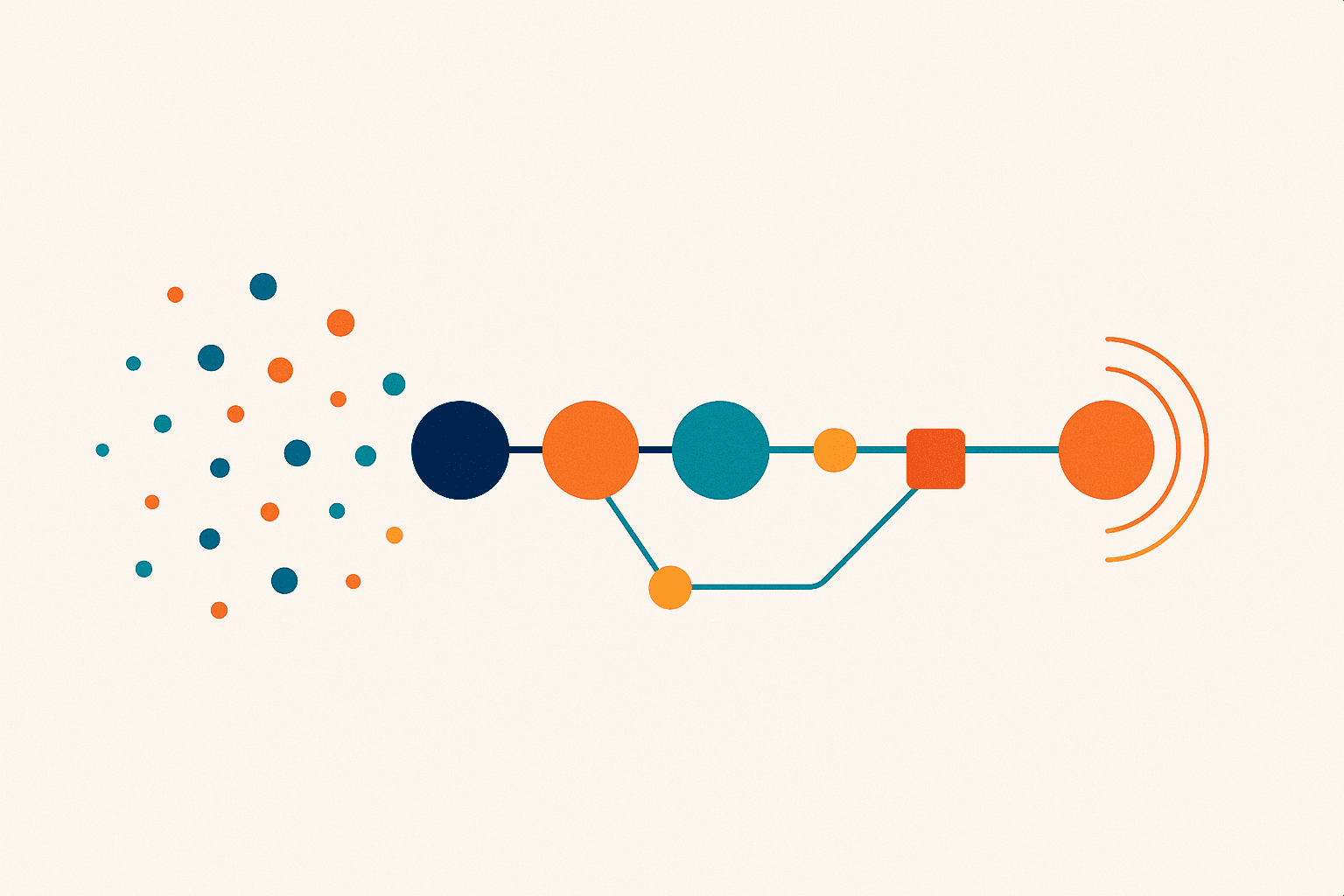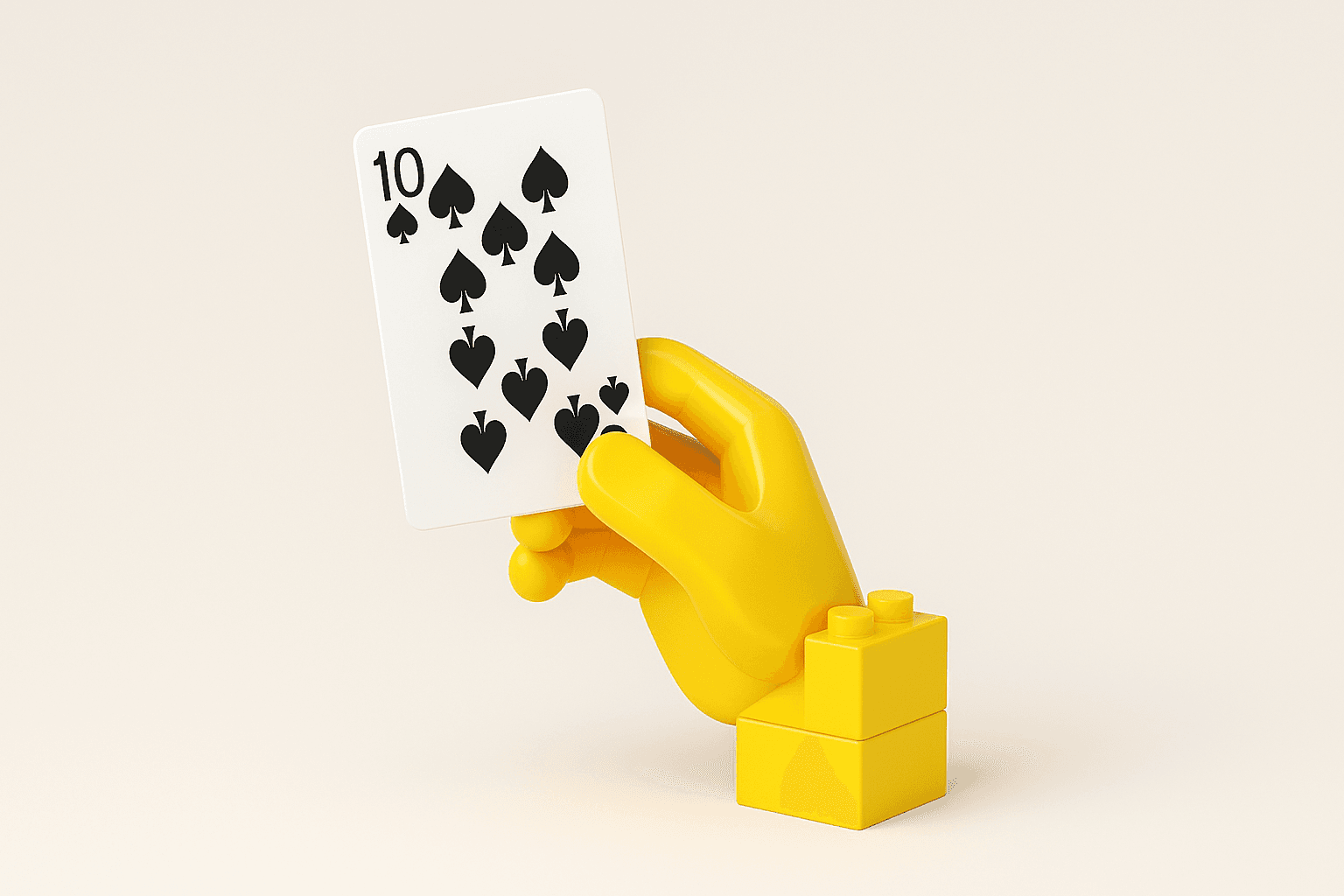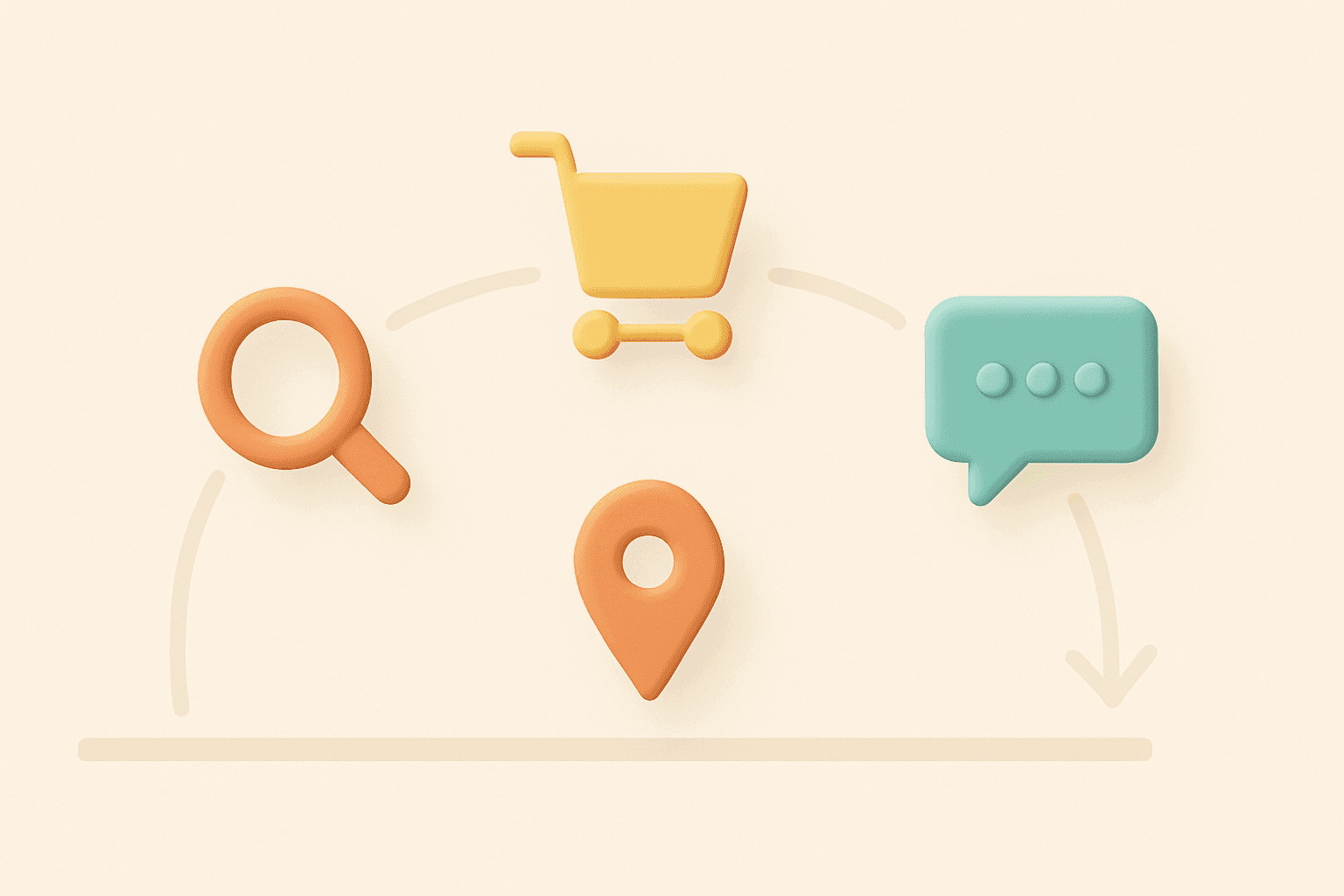Marketing in an Omnichannel Environment: Strategy, Channels & 2025 Trends
For modern retailers, omnichannel marketing is how brand relevance and customer loyalty are built in 2025.
Customers today don’t think in channels. They scroll social, browse mobile apps, walk into stores, and revisit products on desktops—expecting the experience to follow them wherever they go. What they don’t expect? To start over every time. That’s where omnichannel retail marketing steps in.
Unlike multichannel marketing—which treats every channel as its own island—omnichannel marketing is about stitching these islands into one seamless journey. Every touchpoint connects, every message builds on the last, and every interaction feels like it remembers who the customer is.
A 2025 Deloitte study of 46,000 shoppers found that 73% now engage across multiple channels before making a purchase. Only 7% shop purely online. Just 20% stick to stores. Everyone else? They bounce between mobile apps, websites, and even social storefronts.
This shift isn’t just behavioral but operational. To meet this new reality, retail marketers must rethink how they design campaigns, align teams, and deploy technology. And most haven’t caught up.
Despite the omnichannel majority, most marketing executions still fall short. In this guide, we’ll go beyond theory to show you how leading brands are reengineering their marketing around omnichannel strategy. From channel roles to orchestration frameworks, 2025 CX trends to platform infrastructure—this is your playbook for delivering consistent, personalized experiences that convert across every customer journey.
Why Retail Marketing Must Evolve (and Fast)
Customers have moved on. But most retail marketing teams haven’t.
While shoppers expect fluid, self-directed experiences across apps, stores, social, and marketplaces, internal execution is often stuck in silos—fragmented campaigns, disconnected tools, and slow adaptation cycles.
This disconnect shows up in the numbers:
-
Retailers using three or more channels see a 494% higher order rate than those using just one.
-
Customer engagement jumps 250% when omnichannel strategies replace single-channel approaches.
-
Lifetime value rises by 30% when brands move from fragmented to unified customer journeys.
-
Retailers offering curbside pickup or BOPIS convert up to 25.9% more than those who don’t.
In short: fragmentation is expensive. And seamlessness is profitable.
And the gap is only widening: companies without an omnichannel strategy see 64% slower revenue growth than those that do.
The message is clear: modern commerce isn’t about channel expansion. It’s about orchestration. Every customer interaction must feed into a unified brand experience—backed by real-time data, flexible systems, and teams that execute in sync.
Single-Channel vs. Multi-Channel vs. Omnichannel: Understanding the Differences
The terms single-channel, multi-channel, and omnichannel are often treated like steps on a ladder. But in enterprise retail, the difference isn’t about how many channels you use but how well they talk to each other.
Let’s examine how these models differ in customer engagement and campaign management.
| Dimension | Single-Channel | Multi-Channel | Omnichannel |
|---|---|---|---|
| Customer Data | Confined to one source | Scattered across systems | Centralized and synchronized |
| Customer Recognition | One-size-fits-all | Varies by channel | Unified identity across touchpoints |
| Campaign Logic | Linear and batch-based | Channel specific | Behaviour-triggered, real-time orchestration |
| Experience Consistency | Predictable but narrow | Inconsistent and disconnected | Adaptive and cohesive |
| Personalization | Basic segmentation | Channel-led personalization | Journey-aware, real-time personalization |
Why this matters now:
Single-channel strategies no longer meet even the baseline expectations of modern shoppers. Multi-channel approaches might seem like progress, but without integration, they create blind spots—multiple logins, duplicated messages, or worse, contradictory experiences.
Omnichannel isn’t about presence, it’s about perception. Can your brand recognize the same customer across email, store, app, and SMS, and respond to them like a single, intelligent entity?
A few patterns we're seeing among leading retail brands in 2025:
-
Customer intelligence is no longer optional. Without a unified profile, teams can’t personalize effectively, leading to generic messaging and churn.
-
Orchestration is replacing segmentation. Campaigns are no longer planned in isolation. They're dynamically triggered by real actions—cart behavior, dwell time, even offline visits.
-
AI’s role is expanding. From dynamic pricing to product bundles and support routing, omnichannel systems increasingly rely on real-time AI inputs to optimize the next touchpoint.
Bottom line: Don’t approach omnichannel as a channel strategy. Think of it as an operational capability. And it only works when your teams, data, and tech stack are built to support it.
Top 3 Benefits of Omnichannel Retail Marketing
For all the buzz around omnichannel, the real question for enterprise leaders is: what does it operationally enable that other approaches can’t? Below are three core business levers where omnichannel retail marketing drives measurable delta.
1. Frictionless Journey Progression (Not Just Touchpoint Coverage)
Engagement isn’t about how many channels you’re on but whether the customer can move through them without dissonance.
The median shopper interacts with six touchpoints before deciding. But what moves the needle isn’t volume. It’s continuity.
Enterprise retailers who’ve closed the orchestration gap are seeing:
-
80% lift in store traffic from digitally engaged customers
-
4% higher spend per visit when journey context is preserved across interactions
It’s not omnichannel unless your backend systems allow momentum to carry forward. That’s what makes intent compound.
2. Unified Signals, Higher Margins
Disconnected campaigns burn more than attention—they burn budget. A fragmented martech stack leads to duplicated efforts, shallow insights, and missed triggers. On the flip side, retailers with mature omnichannel marketing infrastructure report:
-
9.5% YoY revenue growth (vs. 3.4% for channel-disjointed peers)
-
7.5% reduction in cost-per-contact, driven by centralized logic and targeting precision
Why? Because unified customer intelligence lets every dollar work harder across owned, earned, and paid efforts.
3. Retention-Led Growth, Not Just Acquisition Hustle
Omnichannel isn’t a top-of-funnel trick—it’s a full-funnel engine. What begins as coordinated campaigns evolves into lasting behavior shifts. The data proves it:
-
287% higher purchase rates among omnichannel customers
-
90% better retention than single-channel models
Retention isn’t just loyalty program performance. It’s about relevance. Retailers that surface the right message, at the right time, in the right place—consistently—earn not just repeat visits, but trust.
Building an Effective Omnichannel Marketing Strategy
To build an omnichannel strategy that works in 2025, enterprise teams must move beyond platform presence and focus on orchestration logic. This means mapping journeys as they happen—across sessions, channels, and devices—and designing campaigns that adapt in real-time. The next three pillars show how high-performing teams operationalize this.
Journey-Based Campaign Planning
Omnichannel marketing begins with understanding how journeys actually unfold (not how we wish they would).
Start by auditing actual behavioral flows—not assumed funnels. Where are drop-offs happening? Which touchpoints drive the most intent carryover? Tools like Adobe Customer Journey Analytics and Google Analytics 4 (GA4) can reveal real multi-session pathways—not just isolated sessions.
Shopify’s 2024 Global Shopper Report found that 44% of Gen Z buyers begin their journey through short-form video but convert later via desktop or app—sometimes days apart. This shift demands campaigns that adapt to when and where buying intent re-emerges.
Journey orchestration platforms—like Bloomreach, Salesforce Marketing Cloud, and Insider—serve as adaptive GPS systems. They adjust message timing, channel choice, and creative formats based on real-time friction points like bounce rate, inactivity, or content skips.
Channel-Specific Role Clarity
In an omnichannel environment, channels aren’t just communication tools—they’re behavior triggers. Social platforms spark curiosity. Email revives interest. SMS demands immediate attention. Push notifications prompt action. Direct mail creates tactile impact.
For enterprise marketers, the job isn’t just to assign messages to channels but to sequence them based on context and intent.
This means going beyond static personas or funnel stages. Instead, define channel logic based on behavioral patterns and propensity scores drawn from real-time data. Ask:
-
Which channels trigger highest re-entry rates post-abandonment?
-
Where does conversion velocity accelerate?
-
What’s the channel fatigue threshold for different audience segments?
Top-performing retailers build channel logic matrices that clarify:
-
Primary role: discovery, conversion, loyalty, winback
-
Urgency fit: real-time (SMS, Push) vs. long-tail (Email, direct mail)
-
Personalization depth: from static segments to predictive messaging
-
Retargeting cadence: frequency, content variation, and fallback logic
2025 Trend: Channel-Specific Micro-Journeys
Expect a rise in micro-journeys, where the same customer receives channel-personalized workflows. For instance:
-
A high-LTV user sees a loyalty push in the mobile app
-
The same user receives reactivation nudges via email
-
SMS reinforces urgency based on cart behavior
These journeys aren’t linear—they’re context-aware, sequenced, and dynamic, reflecting real-time intent and long-term value.
Offer & Messaging Consistency Across Touchpoints
While channels have different roles, your core messaging and offers must remain consistent. According to Forrester (via Brixon Group), 68% of B2B customers abandon purchases when they encounter contradictory messaging across touchpoints
Instead of syncing promotions manually, build centralized offer engines connected to both your CRM and commerce platforms. Brands like Decathlon and Sephora use real-time promo APIs to enforce consistency across app, store, and social.
Beyond tools, invest in context memory. The same customer shouldn't receive a “10% off” push notification after abandoning a cart where they were offered 15% off via email. Create messaging rulesets that respect interaction history and reward engagement timing.
Synchronization ≠ sameness. Use modular messaging—where the core offer remains consistent, but tone, creative, and CTAs flex per channel, respecting its role in the journey.
Omnichannel Marketing Stack and Execution Infrastructure
Strategy without execution architecture fails fast. For omnichannel marketing to work, teams must build a tech stack that enables unified customer memory, real-time orchestration, and precise campaign control. Here's what that stack looks like in 2025.
Essential Components: CDP, CMS, CRM, MMP
A functional omnichannel stack is powered by four platform pillars—each serving a distinct role in personalization, delivery, memory, and measurement.
-
CDP (Customer Data Platform): Unifies customer signals across channels to create actionable profiles. This forms the foundation for real-time personalization and predictive targeting.
-
CMS or DXP: Manages omnichannel content delivery. Modern Digital Experience Platforms allow adaptive content rendering by channel, device, and stage in the journey.
-
CRM: Serves as the system of engagement memory, recording customer service, loyalty, and sales touchpoints.
-
MMP (Marketing Measurement Platform): Tracks attribution, channel performance, and journey impact across touchpoints.
Data Synchronization & Decisioning Logic
Without real-time data sync across these systems, customer experiences break. Leading retailers use middleware layers—like Segment, RudderStack, or enterprise iPaaS solutions—to harmonize profiles across platforms and eliminate delays.
AI-powered decision engines layered on top of this data fabric enable:
-
Instant personalization updates based on recent behaviors
-
Dynamic sequencing across journey stages
-
Triggered “next-best-action” delivery across high-performing channels
In composable environments, headless commerce platforms act as execution backbones—feeding frontend UX engines with context-aware content and offer logic.
Campaign Orchestration and Monitoring
Integration is no longer a backend concern—it’s a marketing performance priority. Leading enterprises adopt:
-
API orchestration layers to streamline campaign logic across tools
-
Cross-platform workflow automation (e.g., triggering a personalized push after CRM score update)
-
Centralized command centers—often housed in DXP or MAP dashboards—for campaign calendar visibility, performance monitoring, and creative control
For complex architectures, microservices make orchestration more modular and fail-safe. Each service (e.g., promo engine, loyalty logic, product rec engine) can evolve independently while syncing via lightweight APIs.
Measuring Omnichannel Marketing Success
Measuring omnichannel success means moving past channel-specific vanity metrics. In 2025, the focus shifts to evaluating orchestration effectiveness, signal consistency, and customer value lift across journeys. Below is a modernized framework to guide performance management for enterprise teams.
| Core Focus Area | Metric | 2024–2025 Benchmark |
|---|---|---|
| Journey Orchestration | Cross-Channel Engagement Rate | 2–5% (social), 10–20% (email) |
| Personalization Impact | Conversion Rate Uplift | 10–30% increase |
| Acquisition Efficiency | CAC by Channel Group | $50–$200 (digital channels) |
| Customer Value | Campaign-Driven CLV Impact | 10–20% increase per campaign |
Attribution and Data Activation Insights
Attribution in omnichannel isn’t just about credit—it’s about understanding influence across the journey. Enterprise teams are shifting to:
-
Multi-touch attribution (MTA): Weighted influence models that distribute value across social discovery, email nurturing, and checkout sources.
-
Media Mix Modeling (MMM): Particularly for large offline/retail campaigns where first-party data is sparse
-
Unified identity graphs: Merging touchpoints into persistent customer profiles across sessions and devices
-
Real-time event activation: Triggering next-best-actions not post-click, but mid-journey—based on interaction velocity and engagement decay
Note: As third-party cookies depreciate, leading marketers blend MTA with MMM using data clean rooms (e.g., Snowflake, Habu) and predictive CLV models as fallback attribution scaffolds.
Performance Optimization Loops
Don’t optimize in isolation. Effective teams build closed loop testing frameworks across touchpoints:
-
Monitor orchestration KPIs (not just channel metrics)
-
Correlate engagement decay or drop-off with channel fatigue
-
Test sequencing changes (e.g., SMS before push, email after cart abandonment)
-
Refine micro-journeys for specific audience segments (LTV tiers, behavior flags)
-
Scale what converts, suppress what fatigues
Pro Insight: Use composite KPIs (e.g., “Revenue per Channel Journey” or “Engagement Lag vs. Conversion Window”) to surface cross-channel insights that single-metric views can’t reveal.
Conclusion
In 2025, enterprise brands will compete not on who has the most touchpoints, but on who uses them most intelligently. That means sequencing journeys based on behavior, optimizing with real-time data, and building infrastructure that supports personalization at scale.
Success won’t come from isolated campaigns. It will come from connected experiences, grounded in memory, context, and adaptability. The technology is ready. The data is available. The next move is yours.
📌 Start with a journey audit. Re-map your channel logic. And reimagine what “marketing” means when every touchpoint becomes an experience.
👉 Need help designing your omnichannel strategy?
Get in touch with our team at hello@coderapper.com to explore how we can support your customer experience transformation—from insight to execution.




